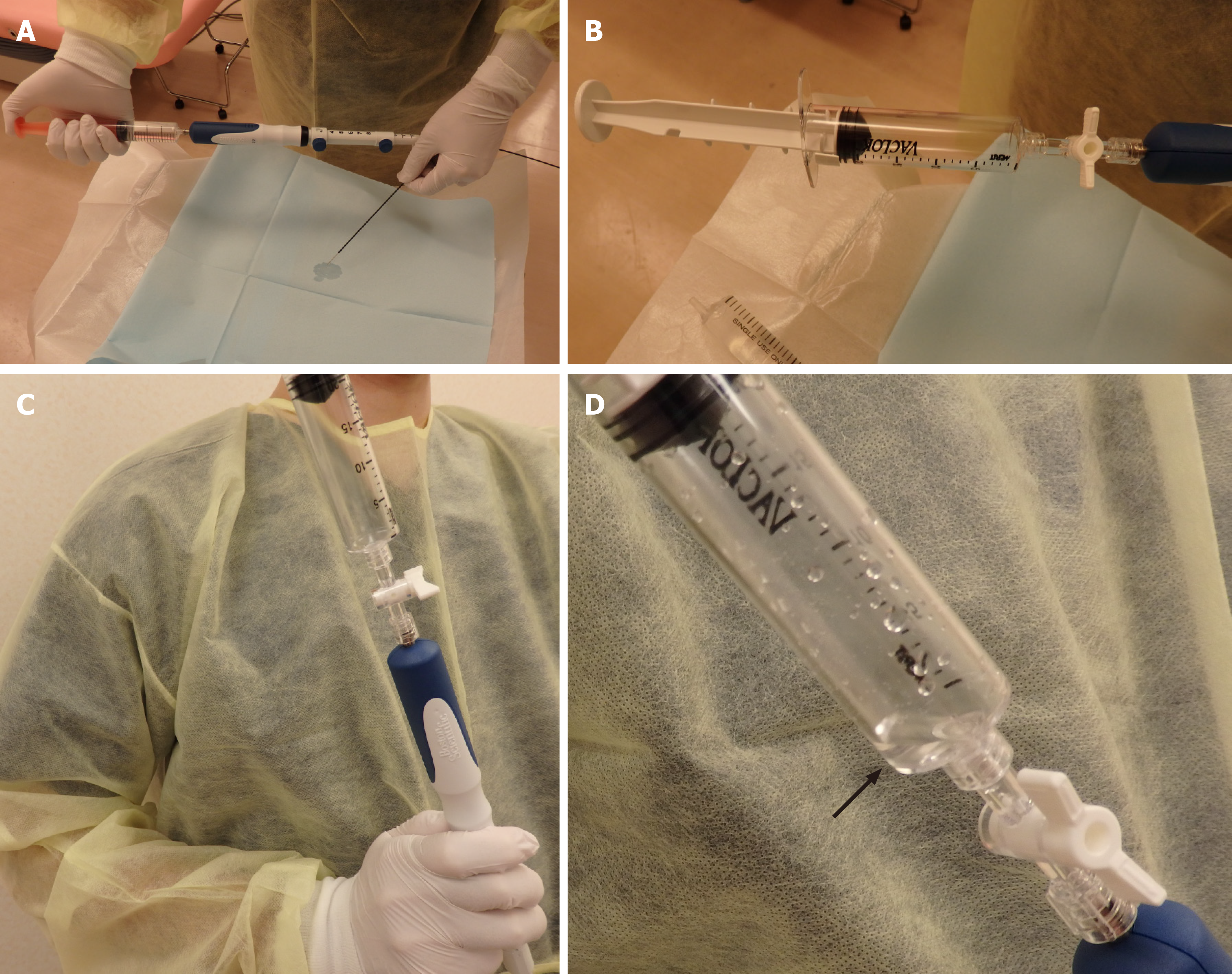Copyright
©The Author(s) 2020.
World J Clin Cases. Jan 6, 2020; 8(1): 88-96
Published online Jan 6, 2020. doi: 10.12998/wjcc.v8.i1.88
Published online Jan 6, 2020. doi: 10.12998/wjcc.v8.i1.88
Figure 2 The wet suction technique method of endoscopic ultrasonography-guided fine-needle aspiration.
A: After the stylet of the needle was withdrawn, saline solution was injected into the needle; B: A locked suction syringe with 20 mL of negative pressure was set at the edge of the needle; C: The needle was used to puncture the target lesion; D: then, the lock on the syringe was opened. Saline solution flowed into the suction syringe due to the negative pressure.
- Citation: Sugimoto M, Takagi T, Suzuki R, Konno N, Asama H, Sato Y, Irie H, Watanabe K, Nakamura J, Kikuchi H, Takasumi M, Hashimoto M, Kato T, Hikichi T, Notohara K, Ohira H. Can the wet suction technique change the efficacy of endoscopic ultrasound-guided fine-needle aspiration for diagnosing autoimmune pancreatitis type 1? A prospective single-arm study. World J Clin Cases 2020; 8(1): 88-96
- URL: https://www.wjgnet.com/2307-8960/full/v8/i1/88.htm
- DOI: https://dx.doi.org/10.12998/wjcc.v8.i1.88









